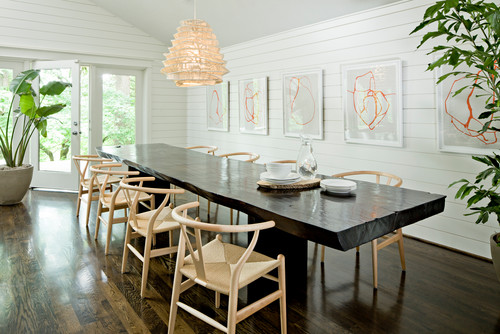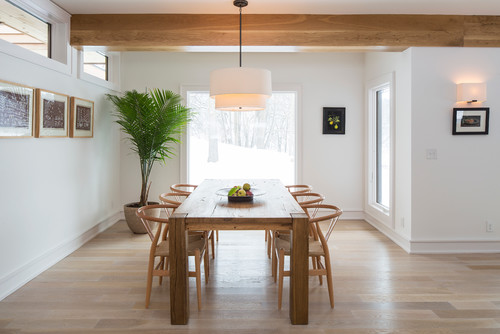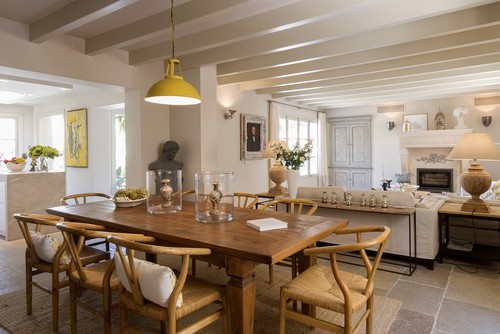If a picture can tell 1000 words , This Chair can recount a thousand stories
If a picture can tell 1000 words then a chair can recount a thousand stories. Some long, some short and some oft repeated. Born from a desire to create a chair that lasts from generation to generation, the Wishbone chair was designed to become part of our lives and lay witness to our stories.
Even if you’re not a design fanatic and don’t know its name, chances are you’ve seen or even sat in the Wishbone Chair. In production for over 67 years, this classic dining chair, designed by Danish designer Hans Wegener, is simple in design but handmade with the finest craftsmanship possible. Celebrated for its clean lines and straightforward style, this piece of modern design history will never go out of style.
Since its production began in 1950, the Wishbone Chair has been made with the same 14 parts which require 100 separate processes and approximately 3 weeks of preparation. Here we see a deconstructed look at the parts which comprise the Wishbone chair.
100 processes and three weeks later…
The unique aspect of the Wishbone Chair is the simplicity of the Danish Design gem’s appearance. But – as with true love – the smooth surface conceals hard work. To create the finished product, Carl Hansen & Son craftsmen spend around three weeks preparing and assembling the 14 parts that make up the chair and hand-weaving the seat. In fact, over 100 production steps are required to make a single chair, and most of the processes demand manual work. The scent of the wood, the feeling of the curvature in the lovingly steam-shaped backrest, and the inspection of the final sanding are some of the aspects that dictate whether each individual chair meets Wegner's stringent demands. The unique seat is woven by specially trained staff: an experienced weaver spends about an hour producing each one. The seat, which requires 120 meters of cord, can only be made by hand as the manual process ensures a finer weave that provides the best possible sitting experience.
“On account of its expressive, graphic appearance, the Wishbone Chair is an icon for everything Danish Design stands for: the finest craftsmanship, a sense for detail and the material, user-orientation, and superior durability. With his Wishbone Chair, Wegner proved that it is possible to create something truly trail-blazing by studying tradition. In fact, this is the only way to design something that extends far beyond its own time,” says Christian Holmsted Olesen, Head of Exhibitions and Collections at Designmuseum Danmark. Today, the Wishbone Chair is in great demand internationally. It enjoys a privileged life, taking pride of place at some of the finest hotels and restaurants in the world including Restaurant Nimb in Denmark and The National Art Center in Tokyo, Japan. It is also an immutable fixture on the cosmopolitan furniture scene. In Asia, the Wishbone Chair is so hugely popular that the Japanese market alone accounts for more than a quarter of its annual production. In contrast to the Scandinavian markets, where light wood is the preferred choice, Japanese purchasers are more tempted by the darker shades of walnut or cherry wood.
Interesting facts about the Wishbone Chair:
The Wishbone Chair consists of a total of 14 parts.
The production process comprises more than 100 steps.
It takes three weeks to make one Wishbone Chair.
In all, there are more than 150 unique combinations of the Wishbone Chair.
The seat of the Wishbone Chair is woven from 120 meters of paper cord. This is enough to rappel all the way to the ground from the top of St. Paul's Cathedral in London – and still have nine meters of cord to spare.
In the mid-1990s, the height of the Wishbone Chair was increased by 2 cm to reflect the increase in height of the population. In Japan, where purchasers prefer the models in dark wood, the chair is still sold in its original height.
The Danish market purchases the most Wishbone Chairs.
The second-largest market is Japan, and the rest of the production is sold in countries all over the world today.
The Wishbone Chair was the first Hans J. Wegner design to enter serial production.
Source: Images and press releases are belong to Carl Hansen & Son
Note: The designer name and his products was mentioned in this article to demonstrate the history of furniture design and it doesn't represent any of the items sold in this store.
Check our full chairs collection from
https://www.ebarza.com/collections/chairs

























Leave a comment
This site is protected by hCaptcha and the hCaptcha Privacy Policy and Terms of Service apply.